BenQ HT2060 Review: Return of the 1080p King
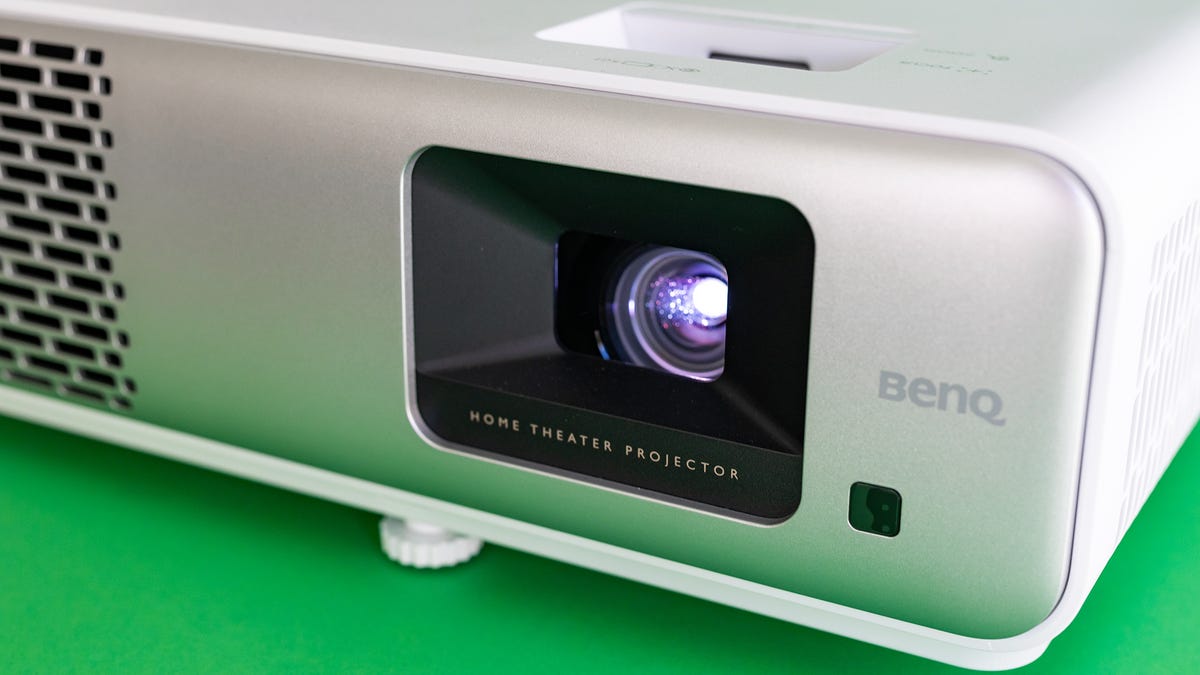
Geoff Morrison/CNET
When it comes to reviewing the follow-up to a great product, I wish I was knowledgeable enough about sports to come up with the perfect sports metaphor. “Back-to-back championships are hard,” or something like that. Or maybe there’s no connection between the two at all as, generally, a company improves its offerings every year until some big shift happens that puts it behind — like the move to 4K, for example. Then it either makes a leap itself, or disappears. BenQ has been in an interesting position: I reviewed the company’s?HT2050A?HD projector in 2020 and loved it. It was already over 2 years old at that point. By the time we last gave it an Editors’ Choice award, it had been out for five years. That’s an eternity in tech, but such was the strength of that excellent little projector.
Enter the long-awaited replacement, the HT2060, with some serious shoes to fill. It still sports 1080p resolution and has roughly the same lumen rating. The case is modernized, classy-looking and more boxy. Wisely on BenQ’s part, it has kept the HT2050A’s lens shift, still a rarity among single-chip DLP projectors. The biggest change is the move to an LED light source instead of a lamp.?
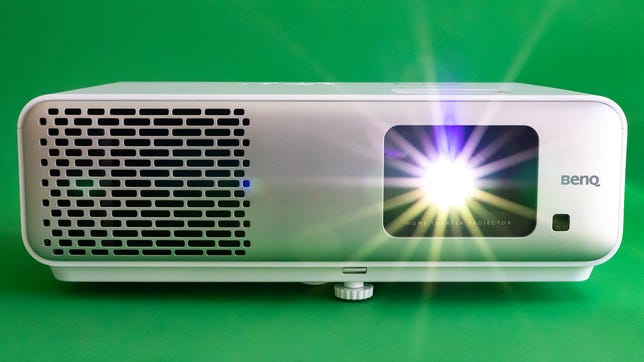
8.2
BenQ HT2060
Get Price Alerts
Like
- Excellent, lifelike color
- Decent contrast ratio
- Vertical lens shift
Don’t Like
- Brightness is rather average
- A little pricey for 1080p
The projector market isn’t nearly as fast-moving as TVs, say, but there have been some notable advancements since the HT2050A first arrived. Most notable of the notables, last year Epson released the HC2350 with 4K resolution. Initially far more expensive than the old HT2050A, its price has fallen enough that it’s now nearly the same price as this 1080p HT2060. Has BenQ waited too long to release a follow-up? Has the market moved on? If you haven’t already skipped ahead, the answer may surprise you.
By the numbers
- Resolution: 1080p
- HDR-compatible: Yes
- 4K-compatible: Yes
- 3D-compatible: Yes
- Lumens spec: 2,300
- Zoom: 1.3x
- Lens shift: Vertical +10%
- Lamp life: 20,000~30,000 hours (LED)
The HT2060 carries over a lot of the features from the HT2050A: both are 1080p, have a 1.3x zoom and a small vertical lens shift of +10%. These doohickies may not seem significant, but they’re a lot more than most DLP projectors in this price range, which have zero. While the HT2060 can accept a 4K signal, it does downconvert it to 1080p.
The lumen spec is only slightly higher than the HT2050A’s 2,200. I would have liked to have seen a bigger jump here, especially with other projectors of similar prices offering far more, though lumen specs are a rough estimate anyway. I measured 985 in the Living Room mode and only slightly less in the incredibly accurate Filmmaker mode. I got a respectable 1,794 in the Bright mode, though the latter was visibly green and not really something you’d use on a regular basis. Generally I used the Living Room mode, despite being a little less accurate, for its extra visual pop.
A Closer Look at the BenQ HT2060
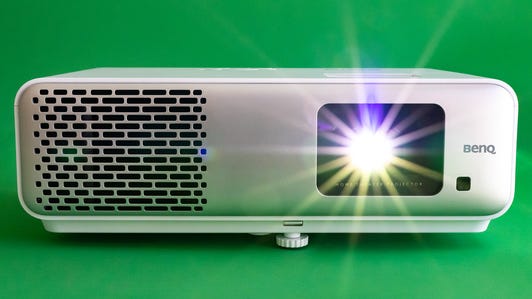
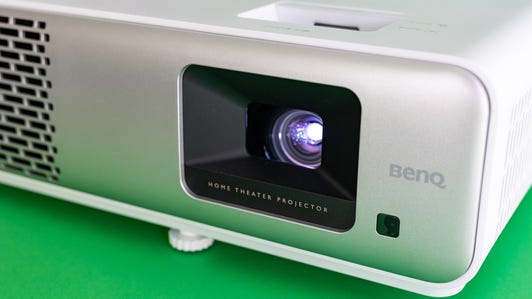
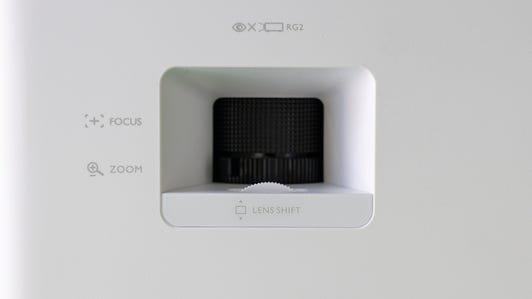
Like its predecessor, the 1.3x zoom is fine, though the HT2060’s throw distance is still a little shorter than most projectors in this range. If you’re replacing a different projector and you already have a ceiling mount, it’s worth checking throw distances on BenQ’s website.
As mentioned in the intro, the biggest change is the move from a traditional lamp to LEDs. Since these LEDs will essentially last the life of the projector, there’s some significant lifetime cost benefits to this move. At four hours a night, even by BenQ’s lower estimate, the LEDs should last about 14 years. BenQ’s replacement lamps weren’t particularly expensive, but over that span of time you’d have spent the same amount as the projector over again ($750). Even if the HT2060 is currently more expensive than its predecessor, it’s still cheaper to own long-term. There are also some significant picture quality benefits to LEDs, which we’ll talk about later.
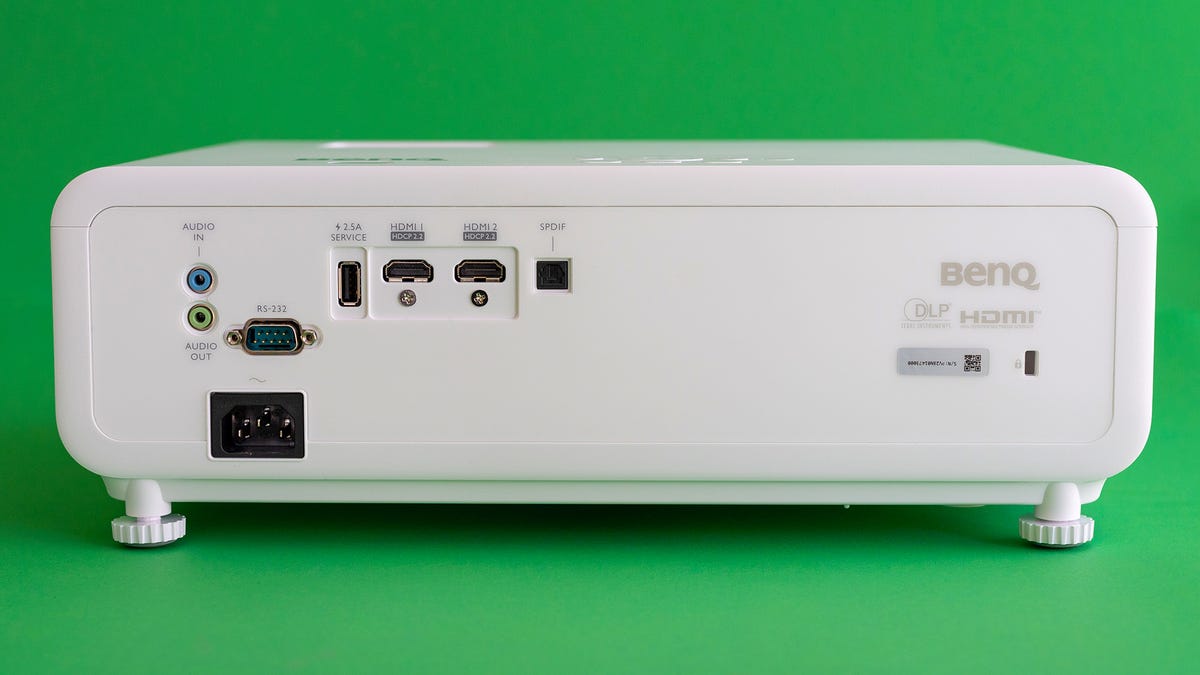 Geoff Morrison/CNETConnection collection
Geoff Morrison/CNETConnection collection
- HDMI inputs: 2
- USB port: 1 (2.5A)
- Audio output: 3.5mm analog (1), optical (1)
- Audio input: 3.5mm analog
- Control: RS-232
- Internet: None
- Remote: Backlit
Oddly enough, the connections are one of the few aspects that’s a step back from the HT2050A, but I’m OK with that. The old model had a variety of analog inputs that just aren’t widely used anymore. Instead, the HT2060 has two HDMI 2.0b inputs, which is all you really need.?
There are analog and digital audio outputs, in case you wanted to connect a streaming stick directly to the projector and send the audio to external speakers. Generally I’d recommend a receiver and speakers to go with a projector, but this is a reasonable option. The projector’s internal speakers are fine compared to other projectors’ speakers, but none of them sound particularly good.?
The boxy remote has a soft amber backlight, as well as direct access to a variety of picture controls.?
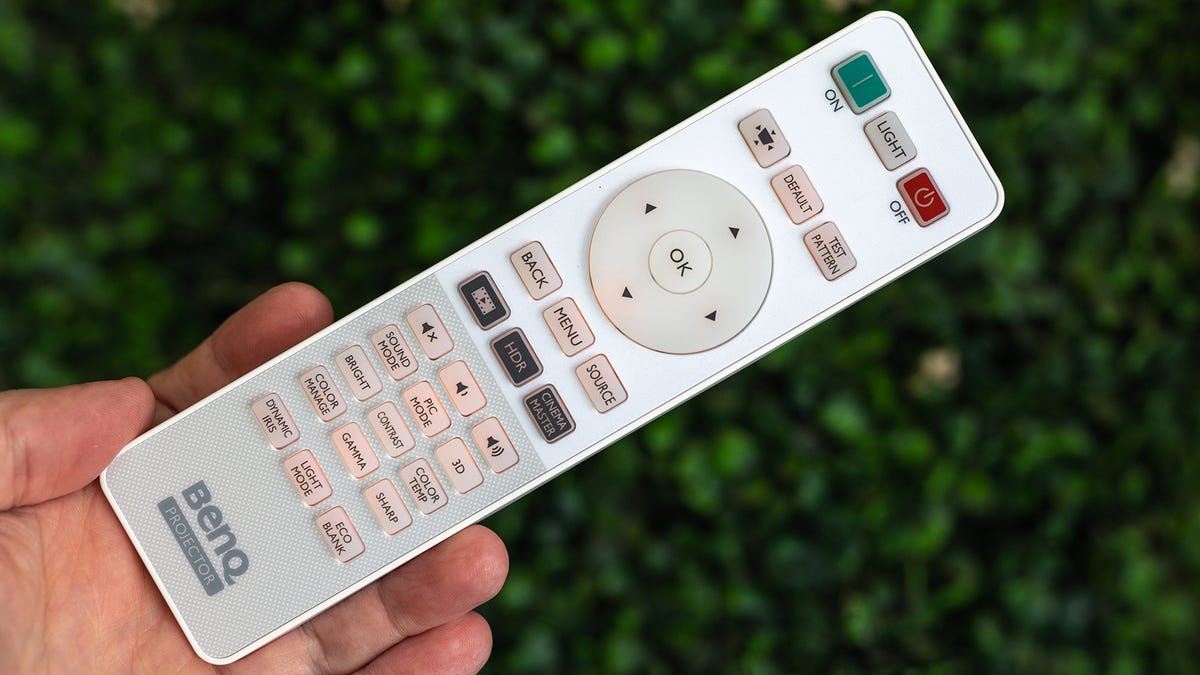 Geoff Morrison/CNETPicture quality and comparisons
Geoff Morrison/CNETPicture quality and comparisons
It was only fair to compare the HT2060 to the?BenQ HT2050A. As of this writing, you can still get the older model for about 25% less, but it will soon be discontinued. The 4K?Epson Home Cinema 2350?has a higher MSRP, but is regularly found for just 10% more than the HT2060. I connected all three competitors to a Monoprice 1×4 distribution amplifier and view the projectors side-by-side on a 102-inch, 1.0-gain screen.
For three fairly similar projectors, they’re surprisingly different. The Epson is bright, but gray; the BenQ HT2050A is dimmer, but punchy; and the BenQ HT2060 is like someone dialed up the color but kept most of the other aspects the same.?
Let’s talk a moment about that color. The HT2060 is one of the most accurate projectors we’ve measured. This goes beyond just accurate greens, reds and blues, but also many of the in-between tones that make an image seem more lifelike. With a variety of content, including HDR, the HT2060 just has far richer, deeper, more realistic colors than the HT2050A. The Epson has very accurate color too, but not quite to the same extent.?
The Epson’s issue, compared to the two BenQs, is a significantly lower contrast ratio. It looks washed-out in comparison. Interestingly, the HT2060 is lower than the HT2050A, 1,320:1 versus 2,094:1 with my measurements. Side by side, this is less obvious than you’d think. The Epson’s 348:1, on the other hand, is very noticeable. While the Epson is a lot brighter, the black levels are significantly higher too. Even if you dialed back the brightness of the Epson, the black levels would still be high. So side-by-side, especially if you’re watching something with a 2.35:1 aspect ratio, the blacks look gray. The image just looks flatter and more artificial.
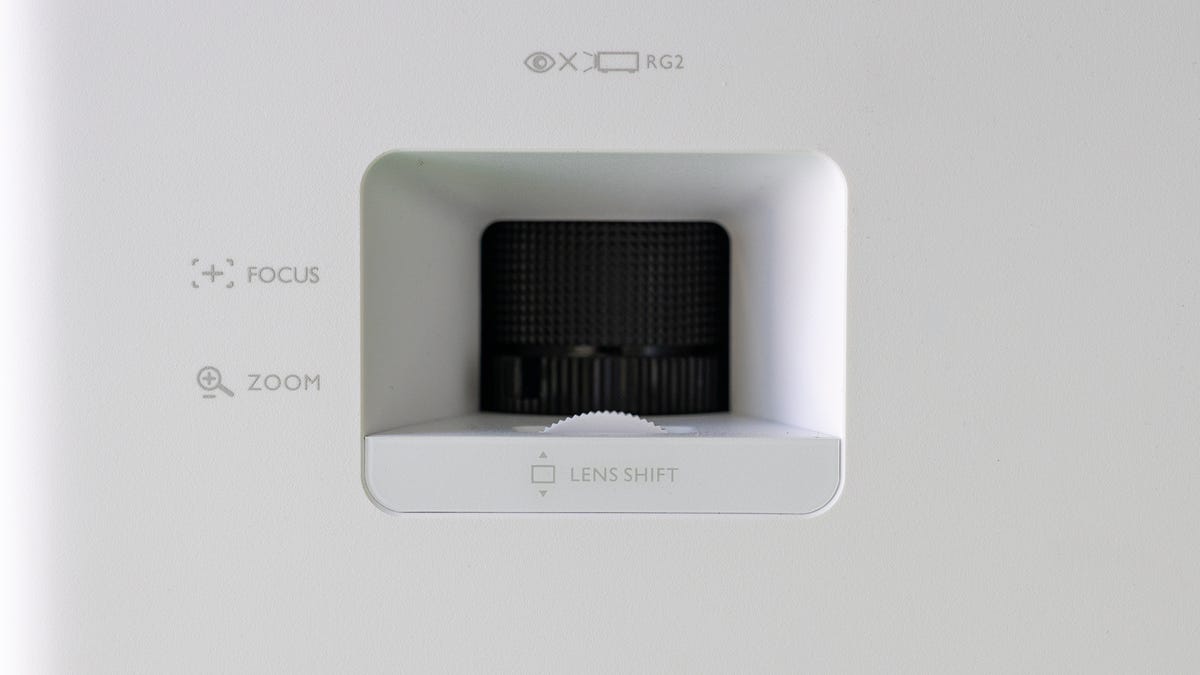 Geoff Morrison/CNET
Geoff Morrison/CNET
What about 4K? That’s interesting too. The Epson is an LCD projector, which suffers from motion blur. The DLP tech of the BenQs doesn’t have that issue. So with certain images, the Epson looks sharper. On others, they look roughly similar if not a slight edge to the DLPs. With closeups of faces, the Epson definitely looks a little sharper but if the camera is moving, the DLP does. Either way, it’s a lot closer than you’d expect. The HT2050A looks the worst here, largely due to some processing issues that aren’t a big deal on their own, but compared to these two newer PJs means it’s starting to look its age.
The most disappointing aspect of the HT2060 is its comparative dimness. It’s not “dim,” per se, but I’d call it average. If you wanted a 150-inch screen or something, the Epson is the better choice. For a light-controlled room, the BenQ HT2060 is still plenty bright.
Between the three options, I’d pick the HT2060. On paper the HT2050A has some advantages, but overall the HT2060 just looks better. The incredible light output of the Epson has its place for sure, but if you’re looking for all-around image quality, the BenQ HT2060’s greater contrast outclasses the Epson.
The king is dead. Long live the king
After everything you just read, my conclusion might surprise you. Yes, the HT2060 doesn’t quite have the same performance on paper as the HT2050A. Between the two, though, I’d still choose the HT2060. The image is just that much more lifelike, you never need to replace the lamp, it turns on and off quickly, and it’s a little quieter. As an overall package, it’s fantastic. If you have a HT2050A, should you upgrade? No. Wait until there’s a 4K projector with great contrast for $1,000 or less, and the market’s not there yet.?
Speaking of 4K, where does this leave the competitive Epson? For most people, the Epson 2350 and the BenQ HT2060 are the two projectors I’d recommend, and they’re surprisingly different. The Epson is an absolute flamethrower — it’s the second brightest we’ve ever measured. In a projector, that’s both impressive and a huge selling point. If you want that epic 150-inch image, or you want to watch movies and TV with some ambient light, that’s your go-to choice. Its contrast ratio, however, is quite middling and a mere fraction of the BenQ’s. The HT2060 just has a more cinema-quality image. It might not be as much of a standout as its predecessor, but it’s a standout nonetheless.